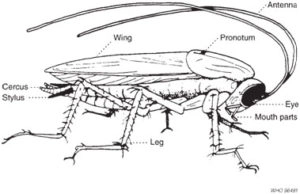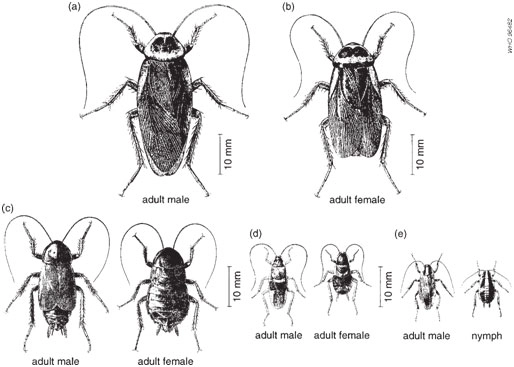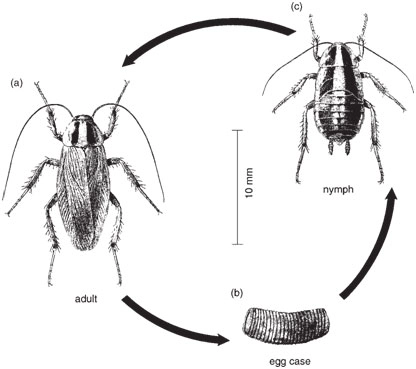Did you know? A cockroach can live for upto one week without its head.
EXPLORE COCKROACHES
- American Cockroaches
- Brown-banded Cockroaches
- German Cockroaches
- Oriental Cockroaches

Cockroaches have been around for millions of years, evolving into some of the most adaptable pests on Earth. There are approximately 4,000 living species of cockroaches in the world. About 70 of these species are found in across globe.
Cockroaches are commonly found in buildings and homes because they prefer warm environments close to food and water. Unfortunately, cockroaches can cause allergies and trigger asthma attacks, especially in children. They can also spread nearly 33 different kinds of bacteria.

COCKROACH FACTS
- Cockroaches have been around since the time of dinosaurs!
- A cockroach can live almost a month without food.
- A cockroach can live about two weeks without water.
- Some female cockroaches only mate once and stay pregnant for life!
- A cockroach can live for up to one week without its head!
- Cockroaches can hold their breath for up to 40 minutes!
- Cockroaches can run up to 3 miles an hour.
Some people may become allergic to cockroaches after frequent exposure. They may play a supplementary role in the spread of some diseases. They are proven or suspected carriers of the organisms causing: ...
- diarrhoea
- dysentery
- cholera
- leprosy
- plague
- typhoid fever
- viral diseases such as poliomyelitis.
In addition they carry the eggs of parasitic worms and may cause allergic reactions, including dermatitis, itching, swelling of the eyelids and more serious respiratory conditions
CONTROL MEASURES:
Environmental management:
Cleanliness and hygiene
- Food should be stored in tightly covered containers in screened cabinets or refrigerators. All areas have to be kept clean so that no fragments of food or organic matter remain. Rubbish bins should be securely covered and emptied frequently, preferably daily.
Basements and areas underneath buildings should be kept dry and free of accessible food and water.
Reduction of accessibility:
Groceries, laundry, dirty clothing, egg crates and furniture should be checked before being taken into a building. In some instances, accessibility to buildings can be reduced by closing gaps in floors and door frames. Openings for drain water and sewer pipes, drinking-water and electricity cables should also be closed.


CHEMICAL CONTROL :
Insecticides are applied to the resting and hiding places as residual sprays and insecticidal spray. Such applications are effective for periods ranging from several days to months, depending on the insecticide and the substrate on which it is deposited.
APPLICATION
Areas to be treated : Areas to be treated include kitchens, galleys, behind and along skirting-boards, in and around sinks, in or under cupboards, under chairs and tables, in utility cabinets, near refrigerators and ice boxes, under loose floor coverings, food preparation areas, ducts, pipes, sewers and manholes. Food storage areas in restaurants, warehouses and other commercial